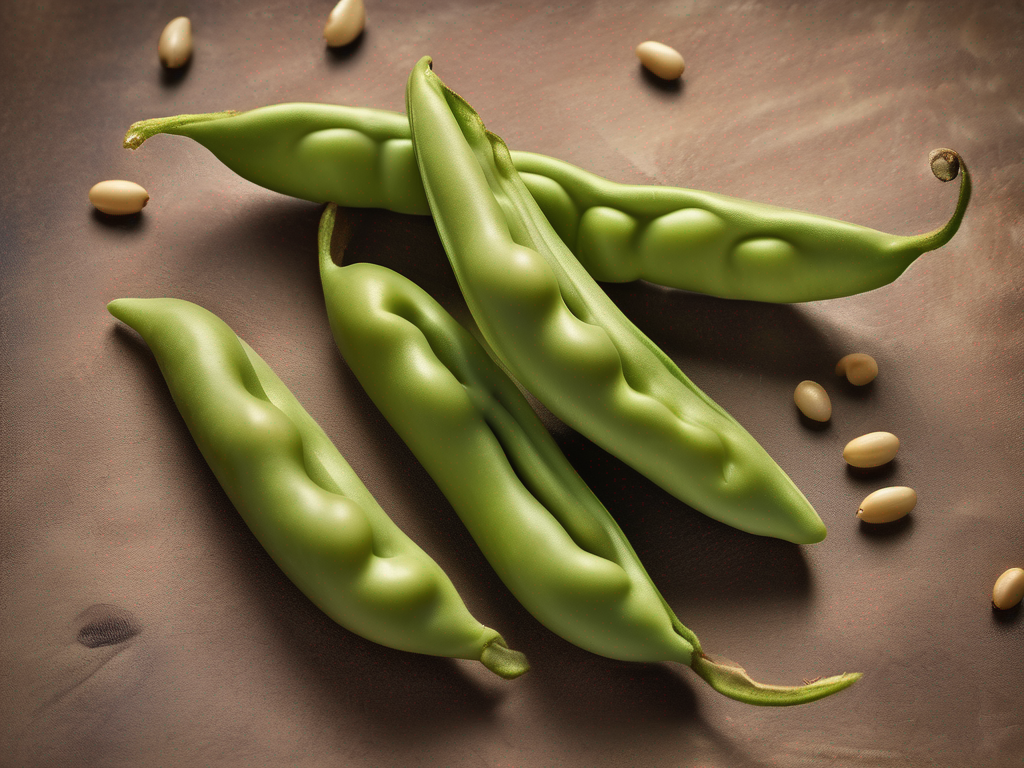
How to Prevent Mold Growth on Climbing Beans in Storage
Get Your Free Food Safety Cheat Sheet
30 most common foods with instant answers. Print it and stick it on your fridge—completely free!
How to Prevent Mold Growth on Climbing Beans in Storage
Climbing beans, also known as pole beans, are a popular and nutritious vegetable that can be easily grown in home gardens or purchased fresh from the market. However, proper storage is crucial to prevent mold growth and ensure the beans stay fresh and safe for consumption. Mold growth on climbing beans can not only affect their taste and texture but also pose health risks if consumed. In this blog post, we will discuss effective ways to prevent mold growth on climbing beans in storage. (Climbing bean)
Understanding Mold Growth on Climbing Beans
Before we delve into prevention methods, it's important to understand why mold tends to grow on climbing beans. Mold thrives in moist and warm environments, making beans susceptible to mold growth if not stored properly. Climbing beans have a high moisture content, especially after harvesting, which makes them an ideal breeding ground for mold spores. Mold can appear as fuzzy patches in various colors, including green, white, or black, on the surface of the beans.
Common Types of Mold Found on Climbing Beans
- Penicillium: This type of mold appears as blue or green fuzzy patches and can produce mycotoxins that are harmful if ingested.
- Aspergillus: Aspergillus mold can cause respiratory issues and produce aflatoxins, which are carcinogenic compounds.
- Rhizopus: Rhizopus mold is fast-growing and can quickly spread on climbing beans, leading to spoilage.
Tips for Preventing Mold Growth on Climbing Beans
To ensure your climbing beans remain mold-free and safe for consumption, follow these practical tips for proper storage:
1. Properly Dry the Beans Before Storage
- After harvesting climbing beans, ensure they are thoroughly dried before storing them.
- Spread out the beans in a single layer on a clean, dry surface to allow for adequate air circulation.
2. Choose Suitable Storage Containers
- Opt for breathable storage containers such as mesh bags or perforated plastic bags that allow air to circulate around the beans.
- Avoid storing climbing beans in airtight containers, as trapped moisture can promote mold growth.
3. Maintain Optimal Storage Conditions
- Store climbing beans in a cool, dry place away from direct sunlight and heat sources.
- Aim for a storage temperature of around 50-70°F (10-21°C) to prevent mold development.
4. Check Beans Regularly for Signs of Mold
- Inspect climbing beans regularly for any signs of mold growth, such as discoloration or fuzzy patches.
- Discard any beans that show mold growth to prevent it from spreading to other beans.
5. Use Desiccants or Silica Gel Packs
- Place desiccants or silica gel packs in the storage containers to absorb excess moisture and prevent mold formation.
- Replace the desiccants periodically to maintain their effectiveness.
Conclusion
By following these tips for preventing mold growth on climbing beans in storage, you can prolong their freshness and ensure they are safe to consume. Proper drying, suitable storage containers, optimal storage conditions, regular inspections, and the use of desiccants are key strategies to combat mold growth on climbing beans. Remember that moldy beans should never be consumed, as they can pose health risks. With proper care and storage practices, you can enjoy fresh and mold-free climbing beans for longer periods.
Remember that prevention is key when it comes to food safety and storage. By taking proactive measures to prevent mold growth on climbing beans, you can safeguard your health and that of your loved ones. For more information on climbing beans and other food safety tips, visit [climbing bean](/food/climbing bean). (Climbing bean)
Related Posts
Here are some other articles you might find helpful:
Authoritative Food Safety References
These agencies and university labs inform every tip and health precaution we publish.
USDA FoodKeeper – Cold Storage Guidelines
Official refrigerator, freezer, and pantry timelines maintained by the U.S. Department of Agriculture.
Visit USDA FoodKeeperFDA Produce Safety Rule & Grower Guidance
Field-to-fridge handling practices that prevent contamination of fruits, vegetables, and leafy greens.
Visit FDA Produce SafetyCDC Foodborne Illness Prevention Hub
Surveillance-backed guidance on pathogens, symptoms, and steps to reduce foodborne illness risk.
Visit CDC Food SafetyUC Davis Postharvest Technology Center
University research detailing optimal storage atmospheres for produce after harvest.
Visit UC Davis PostharvestPenn State Extension – Home Food Preservation & Safety
Peer-reviewed extension bulletins on safe canning, chilling, and reheating practices.
Visit Penn State ExtensionGet Your Free Food Safety Cheat Sheet
30 most common foods with instant answers. Print it and stick it on your fridge—completely free! Want more? Upgrade to the complete guide with 70+ foods.
Scan your food directly and get instant safety info using our AI-powered camera feature.